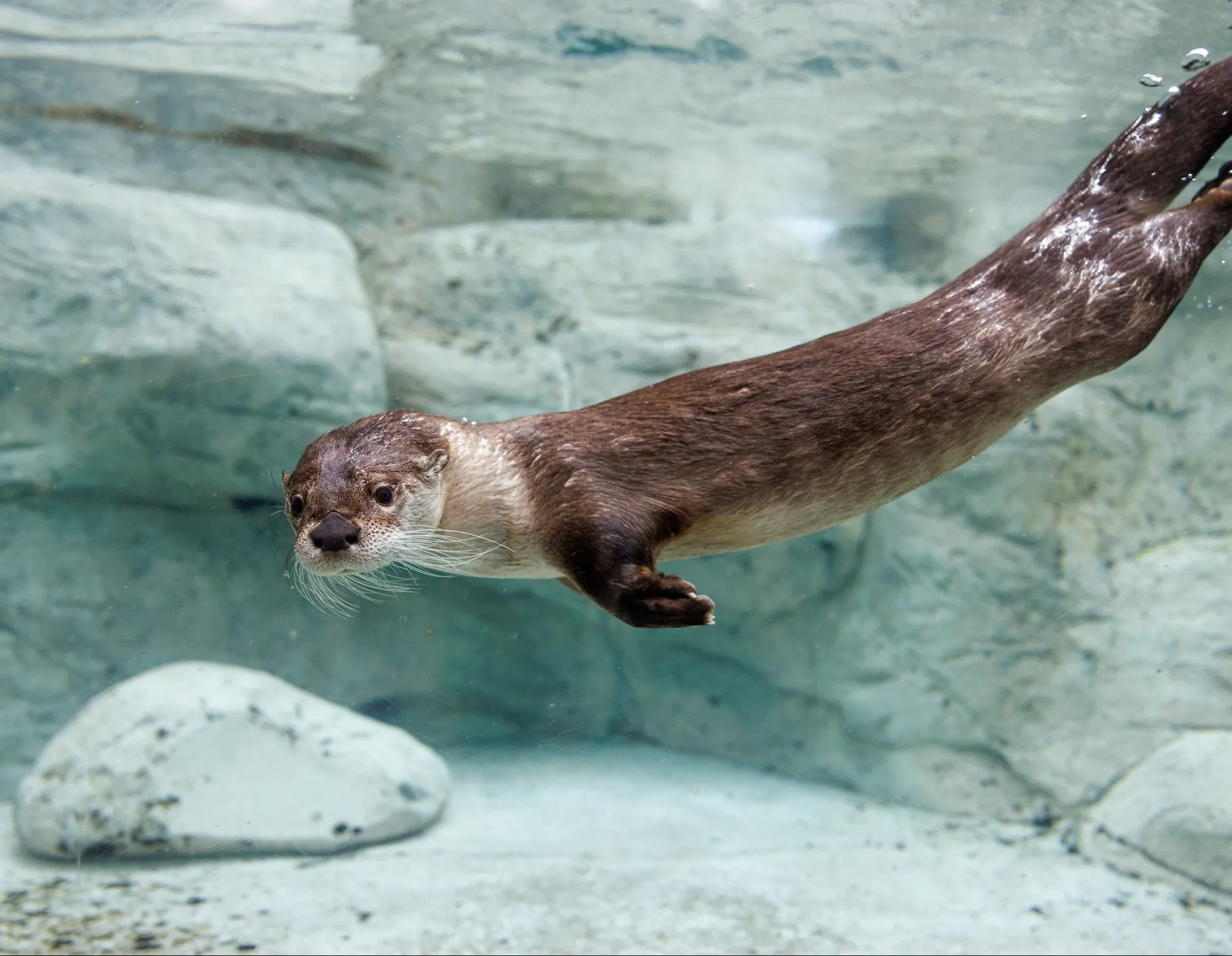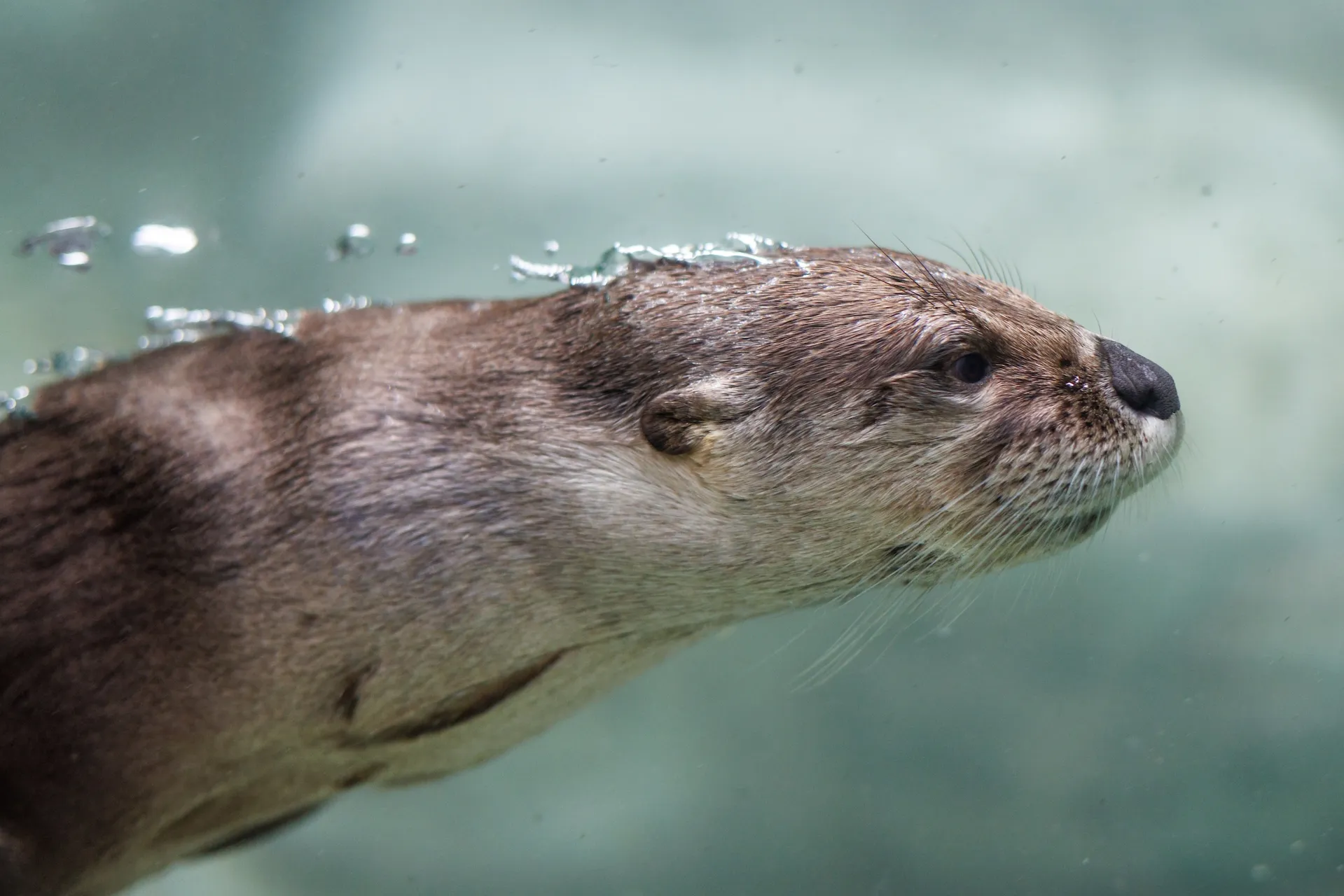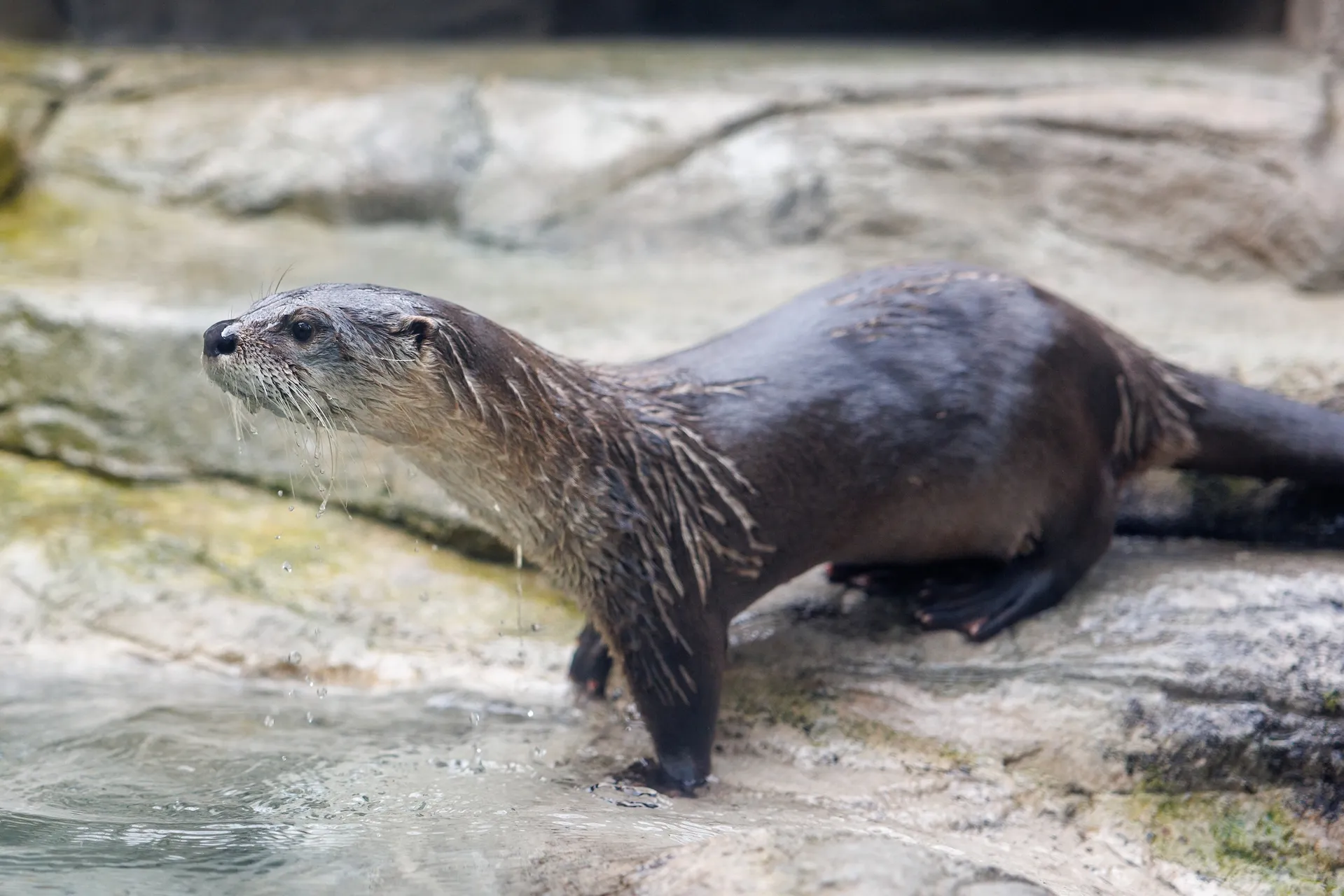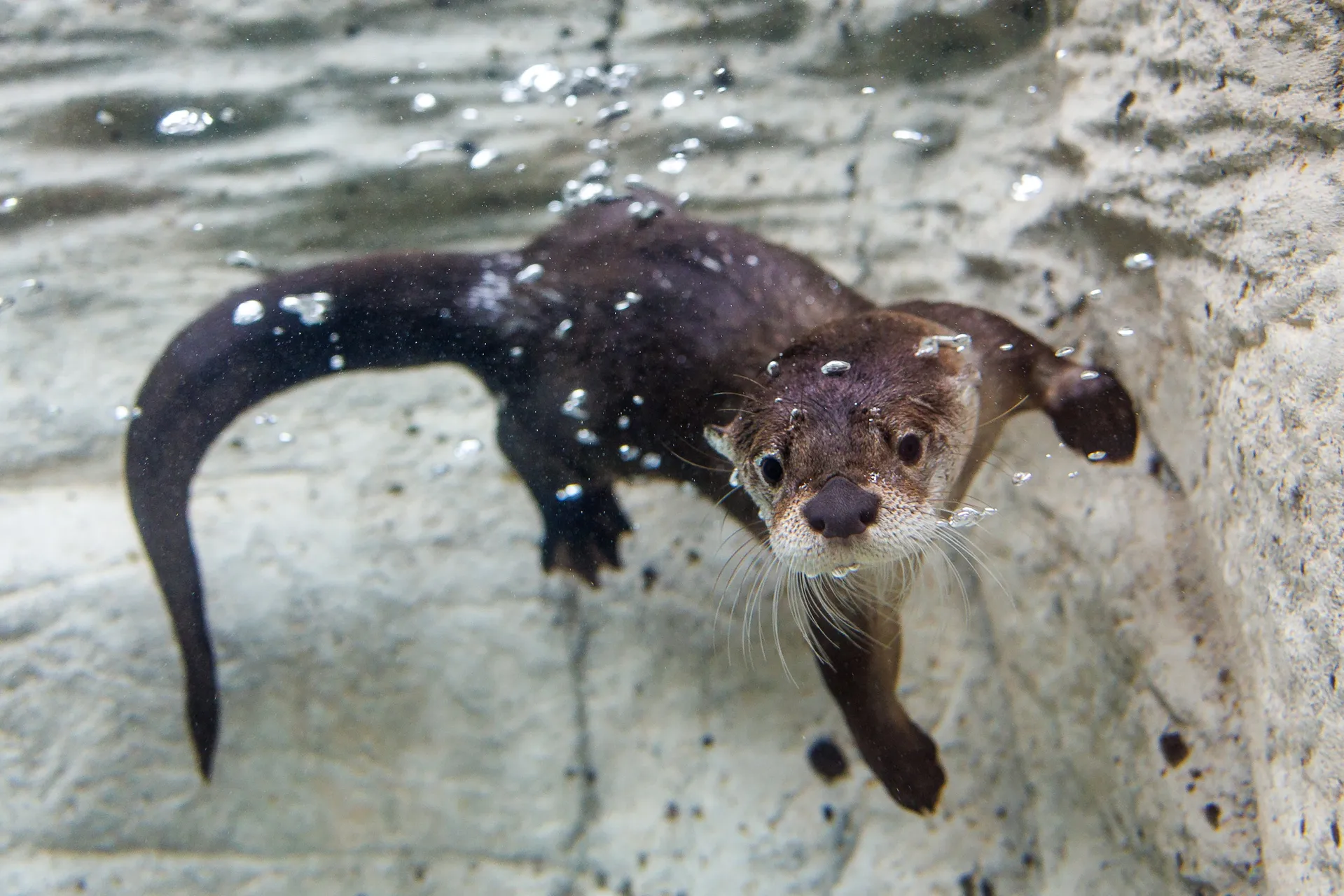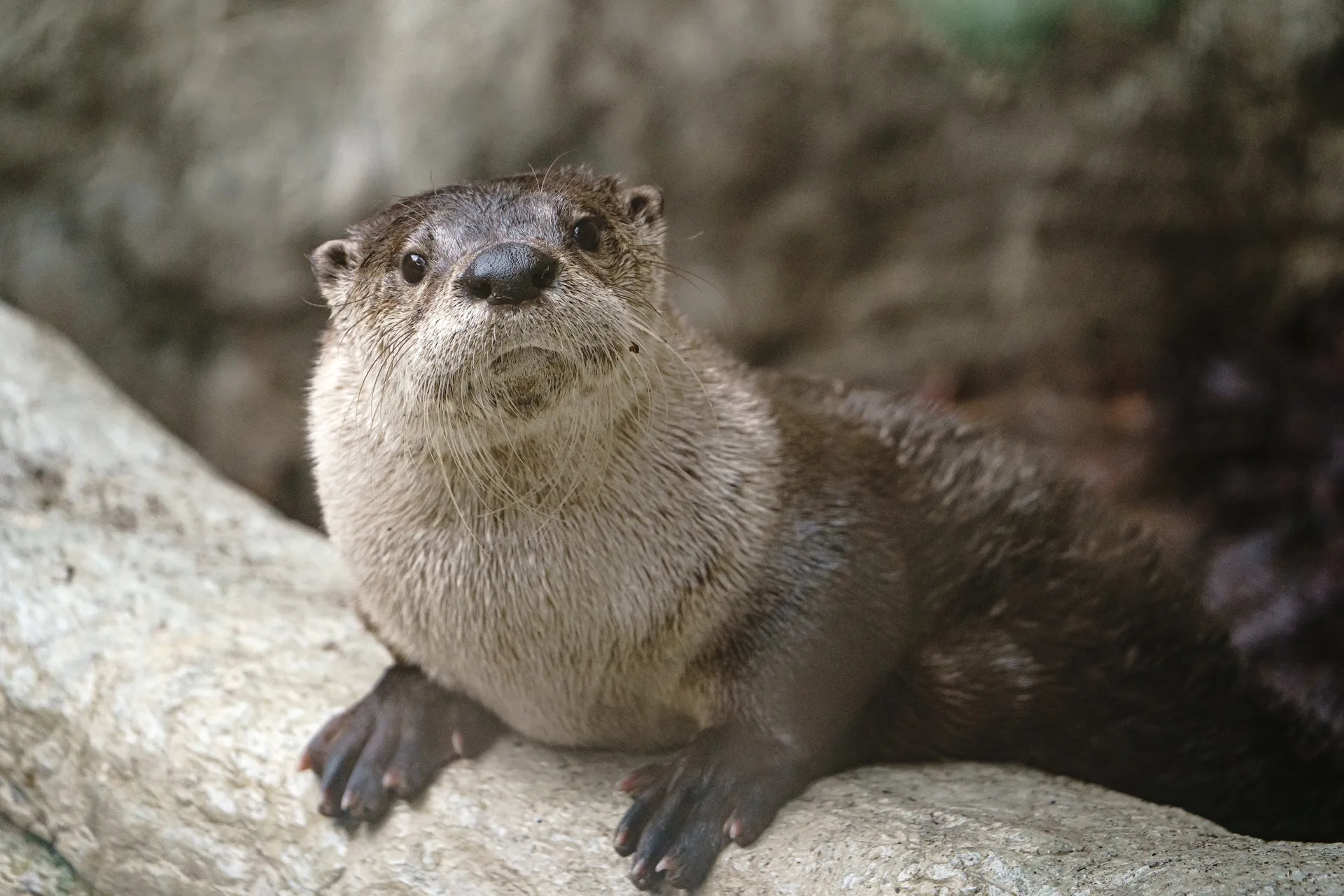On Exhibit
Appalachian Cove Forest
A member of the weasel family, North American river otters are well-designed for their semi-aquatic lifestyle. They are able to maneuver on both land and sea, with the ability to close off their nostrils and ears to prevent water from getting in them. They can even submerge for up to eight minutes in a single breath!
Out of the water it walks with an awkward humpbacked gait, sometimes belly-sliding down muddy or snow-covered hills. While they dog paddle above water, when they dive down, they’re able to use their webbed feet and long tails to steer themselves. Their thick coats are made of two types of hair. The outer layer is the water-repellent guard hairs.
River Otter Falls Cam
Brought to you by EPB
Did you know that river otters are an apex predator? River otters are also known for their powerful bites, able to crush through the shells and bones of their preferred prey. Unlike their salt-water cousins, River otters don’t use tools when they find a tough shell or exoskeleton, relying on their sharp teeth and molars designed for grinding to get the job done.
While they don’t hold hands when they sleep, since they sleep on land as opposed to sea otters, river otters are still very social creatures and often sleep in cozy dens. These dens typically have many entrances and this is also where otters give birth, with typically two to three pups born a year in the wild, between February and April. Though river otters are playful and personable animals, they are crepuscular in nature, being most active at dawn and dusk and spending an average of 11-12 hours a day resting. While we always have otters on exhibit, our romp is likely to be napping if you can’t spot them at first!
